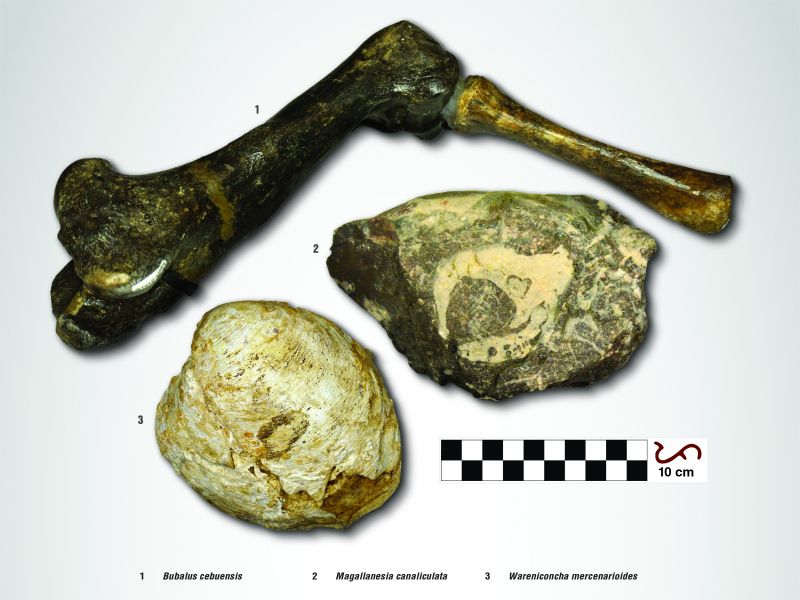Type Specimens

In the taxonomy of biological organisms, certain specimens are often selected and formally categorized as the type specimens. These specimens bear the defined characteristics by which the organism was classified and identified scientifically. The National Museum of the Philippines is the official custodian of all holotype specimens of flora, fauna, and fossils collections. Such specimens are classified as IMPORTANT CULTURAL PROPERTY. The NMP-GPD together with its research associates, study and conserve these specimens of newly discovered and identified fossils.
Magallanesia canaliculata (holotype): This is a rudist, a type of an extinct clam. Rudists thrived during the Late Jurassic Period (about 155 million years ago) up to the Cretaceous Period (about 65 million years ago). They differ with present-day clams such that the two halve shells are not of the same size. One valve is larger and is attached to the sea floor. The other valve is smaller and acts like a lid. Rudists are indicative of a tropical shallow marine environment. In 2013, the NMP-GPD together with the Mines and Geosciences Bureau (MGB) and the National Museum of Nature and Science (Tokyo, Japan), collected a new species of rudist which they named Magallanesia canaliculata. The specimen was found preserved in limestone along the Butuanon River in Barangay Pulangbato, Cebu City.
Wareniconcha mercenarioides (paratype): This is a type of a chemosymbiotic bivalve from Leyte. Chemosymbiotic clams are mollusk species which obtain their nutrients through their symbiotic relationship with sulfur-oxidizing bacteria. These kinds of bacteria are found in methane-seeps and in deep-sea hydrothermal vents. The fossils found in the Pliocene methane-seep deposit of Liog-liog, Tabango, Leyte is the first fossil record of the genus Wareniconcha. Paleontologists from the Mines and Geosciences Bureau and the National Museum of Nature and Science (Tokyo, Japan) donated these paratype specimens to NMP-GPD in 2019.
Bubalus cebuensis (holotype): These fossils of an extinct dwarf buffalo were first described in 2006. However, they were first discovered some 50 years prior in a tunnel of a soft karst formation in Balamban, Cebu. A local mining engineer found these fossils and have it looked by a friend. Years later, the fossils were studied by paleontologists from the museums in the USA and was later on identified as a new species of buffalo. It was then named Bubalus cebuensis after the province it was discovered. These buffalo were much smaller than their present-day relatives. Shoulder height is only about 2.5 ft. only compared to the nearly 6 ft. tall contemporary buffalos. Their diminutive size was due to the fact that they lived in an island. An adaptive response of organisms is to evolve to smaller size when resources are limited, such as an island habitat.
inquiry@nationalmuseum.gov.ph
(+632) 8298-1100
